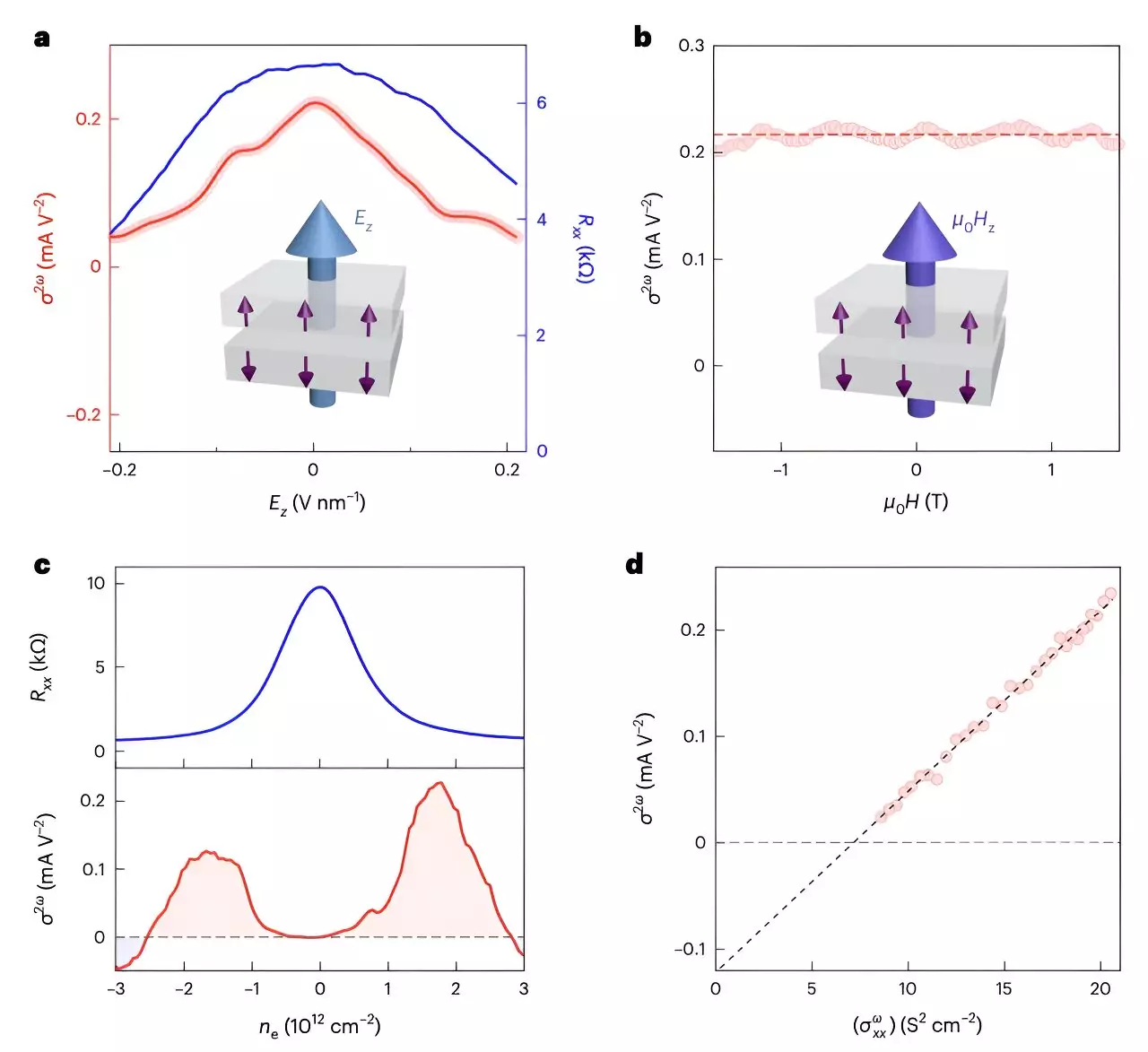Antiferromagnetic materials present a fascinating intersection of quantum mechanics and condensed matter physics, characterized by their unique magnetic configurations. Unlike ferromagnets, where magnetic moments align parallel to one another, antiferromagnets exhibit opposing arrangements between neighboring atoms, leading to a cancellation of net magnetization. This intriguing property opens up valuable avenues for innovations in spintronics and advanced electronic devices.
Recently, researchers from Harvard University made an important leap forward by reporting the discovery of an antiferromagnetic diode effect in the layered material MnBi2Te4, a topological insulator that showcases a centrosymmetric crystal structure. Despite its symmetric properties, this material defies conventional expectations by exhibiting a diode effect—a phenomenon where current flows preferentially in one direction. Their findings were published in the prestigious journal, Nature Electronics, igniting interest among researchers and technologists alike.
The implications of their work extend beyond mere academic curiosity. The antiferromagnetic diode effect observed in MnBi2Te4 could play a pivotal role in the evolution of electronic components such as in-plane field-effect transistors and devices tailored for harvesting microwave energy.
To explore this phenomenon, researchers fabricated devices with distinct electrode configurations—specifically, Hall bar electrodes and radially distributed electrodes. The Hall bar setup allowed the researchers to measure the Hall effect effectively, whereas the radial configuration provided insights into current flow in a circular pattern. Notably, both configurations revealed nonlinear transport characteristics indicative of the antiferromagnetic diode effect.
This nonlinear transport manifests in an asymmetrical flow of electrical current, which is particularly significant as the research team detailed the utilization of various measurement techniques, including spatially resolved optical methods and electrical sum-frequency generation (SFG). This experimental rigor enabled the researchers to pinpoint the large second-harmonic transport in their devices, which is critical for bridging the gap between theoretical physics and practical applications.
Applications and Future Directions
The ramifications of the antiferromagnetic diode effect are profound, as the authors of the study emphasized the potential for creating high-performance antiferromagnetic logic circuits, microwave-energy harvesting systems, and next-generation spintronic devices. Each of these applications marks a significant step towards realizing the advantages of antiferromagnetism in technology, particularly in terms of energy efficiency and processing speed.
The ability to utilize electrical sum-frequency generation as a diagnostic tool for identifying nonlinear responses in quantum materials is another promising direction for future research. Such methods could facilitate deeper understanding of the underlying physics governing these unique materials, potentially leading to the discovery of new effects that had not been previously recognized.
The groundbreaking work done by researchers at Harvard University has not only broadened our understanding of antiferromagnetic materials but has also unveiled promising technological advancements that could revolutionize the field of electronics. The antiferromagnetic diode effect, as demonstrated in even-layered MnBi2Te4, challenges traditional views of conductors and offers exciting prospects for the development of innovative devices.
As further studies are conducted to harness this effect fully, we may witness a new era in the world of spintronics and electronic technology, characterized by faster, more efficient, and highly functional devices that leverage the unique properties of antiferromagnetic materials. The journey is just beginning, and the potential applications of these discoveries are limited only by the imagination and creativity of researchers in the field.


Leave a Reply